China’s Xi Jinping, French president Emmanuel Macron and European Commission President Ursula von der Leyen at the Élysée Palace © Europe.eu
Amidst complex diplomatic circumstances, the Chinese president embarked on a grand European tour, adorned with fine French cognac, a coveted Tour de France jersey and the weight of an old grudge against NATO. It was a carefully orchestrated diplomatic endeavour that many saw as China’s bold attempt to push the transatlantic alliance to its limits.
From the sidelines, Washington kept a watchful eye on the action, aware of the high stakes. Xi Jinping’s five-day tour of Europe, beginning on 5 May in France, included visits to Serbia and Hungary, each characterised by different themes and objectives. Despite the obvious differences, however, there was a common thread running through these various encounters.
Viewed through a multi-layered prism, the Chinese head of state’s visit to Europe was perceived as a delicate balancing act between a charm offensive and resolute exhibition of realpolitik in which Xi Jinping promoted China’s vision of a multipolar world.
His first visit in five years, it was also aimed at expanding China’s global influence and offering Europe an alternative to the US-led foreign policy that has prevailed on the continent for decades. This could be interpreted as an attempt to gradually distance Europe from the United States, as the rising power of China and the seemingly waning power of the United States appear to be on the path to increasing tensions.

This intricate manoeuvre covered a wide range of issues from trade to the conflict in Ukraine, potentially undermining the unity of the EU-US alliance on both fronts. Throughout his visit, Xi paid attention to established bastions of European influence such as France and the European Union, recognising their importance. However, he also placed great emphasis on forging stronger ties with autocratic allies on the continent’s periphery. In this way, Xi is seeking to extend China’s reach and influence beyond the traditional centres of power and strategically expand its network of alliances.
In the picturesque setting of the high peaks of the Pyrenees, the Chinese president stood in a jersey awarded to him by the prestigious Tour de France and shared a momentous occasion with President Emmanuel Macron. Together, they called for a global ceasefire and urged the world not to allow hostilities during the upcoming 2024 Summer Olympics in Paris.
In the heart of the Serbian capital, Xi’s arrival coincided with the poignant commemoration of the 25th anniversary of the ill-fated NATO bombing of the Chinese embassy in Belgrade. This incisive event continues to fuel passionate anti-Western sentiment among Serbian nationalists and is a poignant reminder of historical grievances.
Meanwhile, in Hungary, Xi Jinping sought to consolidate China’s economic presence in the European Union and heaped warm praise on Prime Minister Viktor Orbán, the unyielding prime minister who has stubbornly challenged European allies for over two years. This strategic move has further consolidated China’s economic influence, despite the discord it could cause among European partners.
Observant analysts interpreted Xi’s trip as a deliberate attempt to reaffirm China’s determination to counter American influence wherever the opportunity presents itself. It served not only as a pointed reminder to close American allies, but also as an impetus to reflect on whether its own interests coincide or clash with those of Washington. With this strategic move, China wanted to encourage a re-evaluation of alliances and bring about a more nuanced assessment of the balance between national interests and loyalty to the United States.
It also shows how skillfully Beijing masters the balancing act between vigorously pursuing its economic interests and maintaining friendly diplomatic relations, possibly even strengthening its influence in certain regions of the continent.
The Chinese president’s visit came at a time when Europe and the United States formed a largely united front in their support for Ukraine. Within this collective stance, however, there are faint signs of divisions, and China subtly showed signs of possible exploitation. It indicated a strategic inclination to capitalise on existing fault lines and use them to its advantage.

| SETTING THE STAGE IN PARIS
When Xi Jinping set foot on French soil on 5 May, he praised the strength of Sino-French relations, describing them as a model of peaceful coexistence and mutually beneficial cooperation between nations with different social systems. This tribute was in line with the “global strategic partnership” between China and France declared the previous year. By supporting the concept of European strategic autonomy, Beijing has actively promoted division in the transatlantic community and sought to create a climate in which divergent interests and priorities undermine the cohesion of Western alliances.
As for French President Emmanuel Macron, he reiterated a speech he had made at the Sorbonne last April when he had stressed the need to achieve “strategic autonomy” and to cultivate military resilience and transform Europe into a formidable global power. Macron also spoke in favour of eliminating “strategic dependencies” in key sectors, ranging from semiconductors to key raw materials.
This multi-layered approach aims to protect the EU’s sovereignty, reduce vulnerabilities and ensure the Union’s self-sufficiency so that it remains strong and resilient in an ever-changing world.
Emmanuel Macron also spoke of trade disputes and diplomatic efforts on Ukraine. In a remarkable speech, he emphasised the importance of fair competition and stressed the need to implement “reciprocity strategies” in trade agreements, while highlighting the environmental benefits of the “Made in Europe” approach. Interestingly, Macron lined up China and the United States in terms of trade rules, claiming that both leading world powers have chosen to flout these regulations. He added, “we want trade that benefits us but many others are starting to change the rules of the game, who are over-subsidising, from China to the United States”.
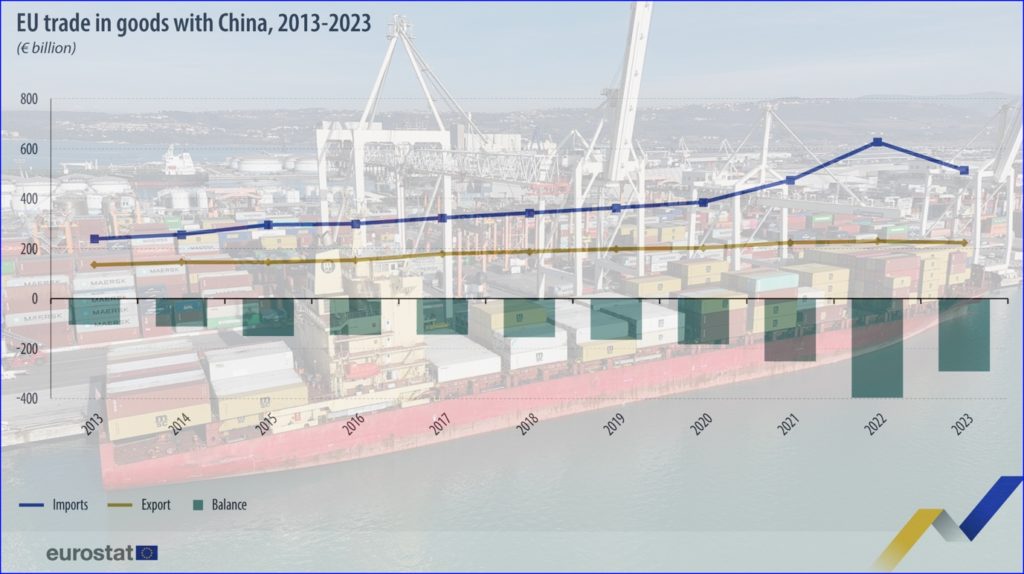
On trade issues, the focus was on eliminating overcapacity in order to restore the balance in European trade with China. This includes reviewing subsidies, with France playing an important role in the EU Commission’s investigation into Chinese electric vehicles. In addition, ensuring fair market access for French companies and building robust supply chains are important objectives. What has become known in political circles as the French “cognac diplomacy” centres on a Chinese anti-dumping investigation into European brandy, particularly the famous French cognac. These specific trade issues highlight the subtleties and complexities that require attention and negotiation between France and China.
This bilateral visit is also important at European level, as shown by Macron’s previous talks with German Chancellor Olaf Scholz and the participation of Ursula von der Leyen, the President of the European Commission, in the trilateral meeting. However, expectations need to be tempered regarding possible concessions from Xi Jinping. Although he lifted the restrictions on beef and apple imports for Germany, he remained adamant on the issue of industrial overcapacity. Xi justified this stance by arguing that Chinese exports of green technologies have not only enriched the global supply chain and eased inflationary pressures, but have also made a significant contribution to combating climate change.
Since China was invited to join the World Trade Organization in 2001, trade relations between China and the EU have experienced a remarkable 900% growth, with the total trade volume reaching 927 billion dollars in 2022. In parallel, the EU’s trade deficit with China has increased by 930%, rising from 46 billion in 2001 to 429 billion in 2022. Chinese foreign direct investment in the EU is mainly concentrated in three countries: France, Germany and Hungary. In particular, Chinese exports to France have increased significantly, from less than 4 billion in 2001 to 42 billion in 2022. At the same time, French exports to China have risen to 25 billion dollars. (Source https://rhg.com › research › chinese-fdi-in-europe-2022-update)
The second major topic on the agenda was securing Xi’s support for a peace settlement in Ukraine, as Macron seeks co-operation with China “on global issues”. The Sino-Russian friendship pact has added to European fears about China’s strategic aspirations, its reluctance to denounce Russia’s war in Ukraine and its economically supportive stance towards Russia.
Although Beijing reiterated its pledge not to sell arms to Moscow, Xi expressed his displeasure at the criticism and firmly rejected any efforts by the West to exploit the crisis to blame or discredit another nation or to provoke a new era of Cold War-like hostility.
During the Beijing summit in December 2023, Ursula von der Leyen took a firm stance by declaring that China’s response to the “Russian war of aggression against Ukraine” was the crucial issue for the EU in its bilateral relations with China. She warned that the EU could impose sanctions on Chinese companies suspected of supplying dual-use goods to Russia. China’s subsequent vote in favour of a UN resolution explicitly recognising the “aggression of the Russian Federation against Ukraine” – although it was a broader resolution advocating closer cooperation between the UN and the Council of Europe – marked a diplomatic turning point. Although largely symbolic, it made it clear that Beijing has adapted its approach to maintain positive relations with EU institutions.
Although Xi’s efforts to persuade Macron to support Beijing in combating the rise of European protectionism were not successful, the Chinese leader did manage to create an opportunity for further diplomatic relations with Europe, which is preferable to diplomatic isolation. This development is significant in that Beijing is expected to continue to pursue co-operation with individual European states as part of a strategy of “divide and conquer”, with the aim of preventing the formation of a broader coalition, encompassing both economic and military aspects, aimed at countering China’s influence.
| DEEPENING ECONOMIC INROADS
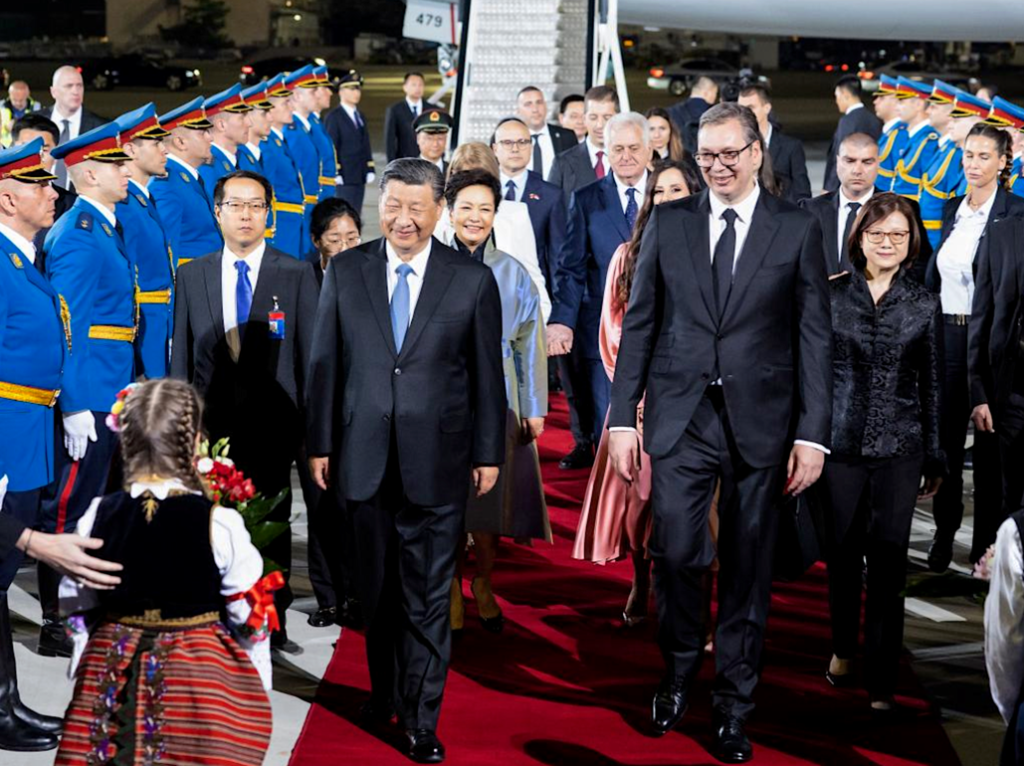

President Xi Jinping carefully chose the three countries he visited, as each of them shares significant historical milestones with China. However, the main motivation behind Xi’s selection was probably the opportunity to deepen China’s influence and build more ties in each of these countries.
In contrast to his visit to France, his trips to Serbia, an EU accession candidate, and Hungary, an EU member state, emphasised his commitment to strengthening political relations and promoting investment in Eastern and Central Europe.
Both countries are an integral part of Xi’s ambitious Belt and Road Initiative, a colossal infrastructure project to connect Asia, Africa and Europe, and maintain close ties with Russia.
Serbia offered Xi the most favourable opportunity to deepen relations, as economic ties between Serbia and China have been steadily expanding. Upon his arrival at the presidential palace, Xi was enthusiastically welcomed by a crowd waving Chinese flags and chanting “China!, China!, China!” During his visit to Belgrade, Serbian President Aleksandar Vučić supported Xi’s vision of a “global community of shared future” and the two heads of state celebrated their “ironclad partnership” while announcing the implementation of a free trade agreement signed in 2023, which will come into force on 1 July. According to official Serbian figures, China is now Serbia’s second largest trading partner after Germany.
Xi’s visit coincided with the 25th anniversary of the unintentional bombing of the Chinese embassy in Serbia by NATO forces. He visited the site of the attack in 1999, in which
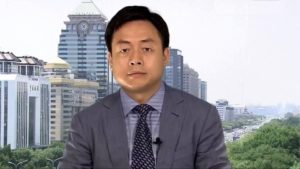
three Chinese journalists lost their lives. According to Stefan Vladisavljev, Programme Coordinator of the Belgrade Foundation for Political Excellence (BFPE) in Serbia, “the commemoration of the embassy bombing serves to create a shared sense of victimhood among the people of China and Serbia and effectively positions the West as the enemy”.
Meanwhile, Professor Wang Yiwei, Director of the Centre for EU Studies at Renmin University of China, believes that “the commemorative events could emphasise the detrimental consequences of NATO enlargement. However, given the improved relations with Washington, the United States should not be at the centre of criticism”.
In an editorial published the same day, Xi issued a strong warning, emphasising that the Chinese nation would always remember the bombing and would never tolerate a repeat of such a tragic event. These remarks were widely perceived as being directed against NATO and Western countries.

Alicja Bachulska, Policy Fellow at the European Council on Foreign Relations, emphasised the significance of the timing of the visit in this situation. She stated: “Xi’s decision to visit Belgrade on the 25th anniversary of the NATO bombing of the embassy was crucial. This move positioned NATO, and indirectly the United States, as destabilizing factors.” Bachulska went on to explain that Xi’s main aim in visiting Hungary and Serbia was to send a “definitive message” that a strategic alignment with China can bring benefits, especially to nations disillusioned with Western-led models of co-operation and what they see as hypocrisy.
Bachulska went on to explain that Xi’s main aim in visiting Hungary and Serbia was to send a “definitive message” that a strategic alignment with China can bring benefits, especially to nations disillusioned with Western-led models of co-operation and what they see as hypocrisy.
In recent years, economic relations and mutual exchange between China and Serbia have increased significantly. According to Vladisavljev, Serbia’s relations with Russia deteriorated after Russia’s invasion of Ukraine, which gave China the opportunity to close this gap. Data from the Stockholm International Peace Research Institute (SIPRI) shows that between 2020 and 2023, China was Serbia’s second largest arms supplier after Russia; China has supplied Serbia with military equipment, including medium-range missiles and transport aircraft.
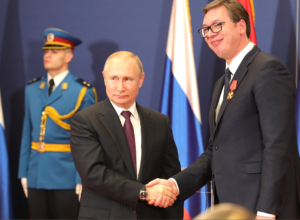
And in October 2023, China hosted the third summit on international cooperation as part of the “One Belt, One Road” initiative. Both the Serbian President and the Hungarian Prime Minister attended that meeting in Beijing.
Although Serbia is officially seeking membership of the European Union, it is gradually moving away from this path as certain agreements with China do not comply with the accession requirements set by the EU. President Vučić maintains a friendly relationship with Russian President Vladimir Putin and has condemned Russia’s full-scale invasion of Ukraine. However, he has not participated in the international sanctions against Moscow.
| A STRATEGIC PARTNERSHIP
The Chinese president’s trip culminated in Hungary, a country widely considered Beijing’s closest ally within the European Union and where his country is seen as an important partner rather than a competitor. President Tamás Sulyok and Prime Minister Viktor Orbán extended a warm welcome and accorded him a ceremonial display of military honours, followed by his participation in an elegant gala dinner. Subsequently, he engaged in lengthy discussions held at the Hungarian prime minister’s residence.
A declaration was issued on the creation of an “all-weather partnership”, which is intended to usher in a new era of economic cooperation. The Chinese president expressed his willingness to embrace this moment as a fresh beginning and stated: “We are willing to take this as a new starting point to push bilateral relations and pragmatic cooperation into a golden channel and move towards a higher level”.
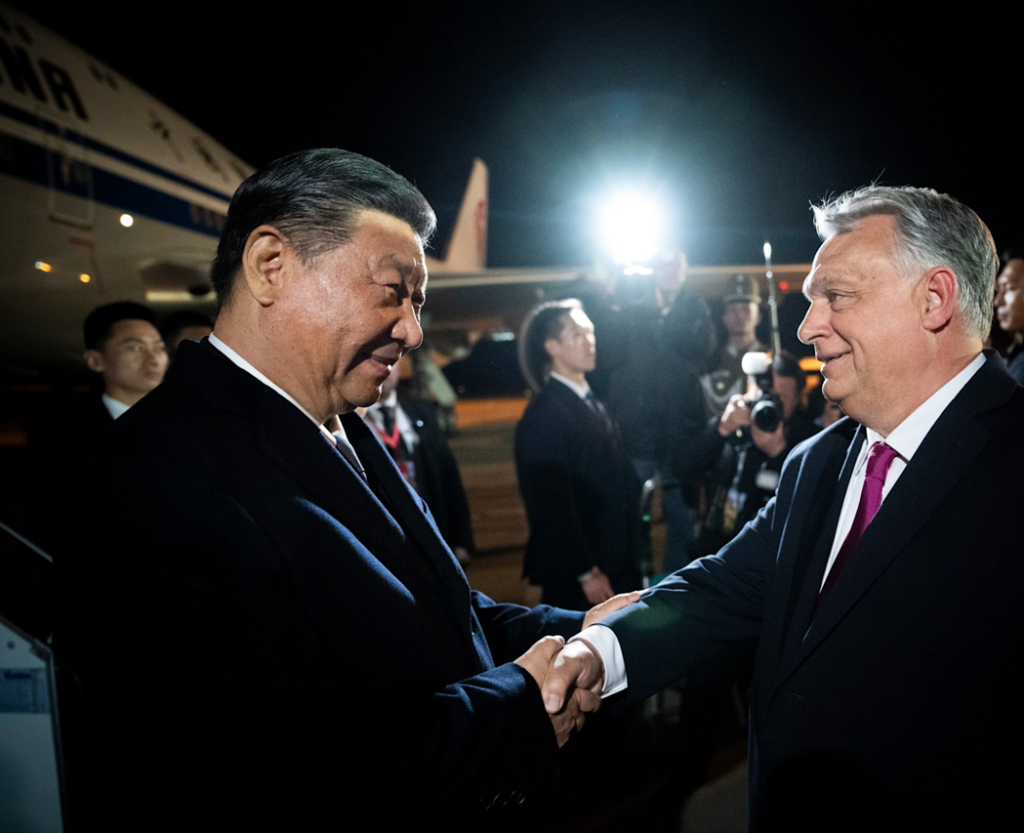
According to Hungarian officials, Xi has made firm commitments to increase investment in transport and energy infrastructure. These initiatives included the construction of a high-speed railway line connecting Budapest city centre to the airport and cooperation in the nuclear sector.
Xi also promised progress on a major $2.1bn project to link Budapest with Belgrade by rail. The project is primarily funded by a loan from China and is in line with the objectives of the Belt and Road Initiative.
In addition, both parties have reached an agreement on the construction of battery plants for electric vehicles and a solar energy storage facility in Hungary. In December 2023, Chinese car manufacturer BYD announced its intention to open its first European electric vehicle factory in Hungary – a decision that could not only pose a major challenge for European car manufacturers but also give President Xi Jinping the opportunity to circumvent the tariffs imposed by the European Union on Chinese electric vehicles, which is another issue that is likely to cause displeasure in Brussels.

Budapest’s positive attitude towards China differs significantly from that of the leadership of the European Union and numerous member states within the bloc. They are considering reducing their dependence on a “systemic rival” and “strategic competitor”.” This view has increasingly strained Beijing’s trade and investment relations with the 27-member bloc.
The right-wing Hungarian prime minister, whose country was the first European country to participate in China’s “Belt and Road” initiative, has actively campaigned for closer relations with Beijing. At a press conference on 9 May, Viktor Orbán emphasised that China accounted for three quarters of the investments made in Hungary in 2023.
In Beijing’s view, Hungary is an important Chinese base within the EU. This is reflected in the hope expressed by Xi that Budapest, which will take over the rotating presidency of the Council of the European Union from July, will contribute to the “stable and healthy development of relations between China and the EU”.
In this context, the significance of Hungary in hindering Brussels’ initiatives and efforts to mitigate the risks related to China should not be overlooked; Budapest plays a role in safeguarding China’s proxy veto power against EU measures that run counter to Beijing’s interests, such as criticism of human rights, sanctions or technology restrictions.
| THE XI JINPING FACTOR
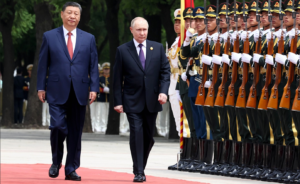
Presidents Xi Jinping of China and Vladimir Putin of Russia in Beijing © Kremlin.ru
As the world’s attention shifts to the ever-changing landscape of global politics, two leaders stand out among the rest. On 16 May, the Russian president arrived in Beijing for two days of talks with his Chinese counterpart and ‘dear friend Xi Jinping’. The aim of the visit was to secure the diplomatic and economic support of a key ally as Russia’s conflict in Ukraine continues and its dependence on China continues to grow.
Although both are known for their authoritarian grip on power, their approaches to international relations and global influence couldn’t be more different. But surprisingly, Putin is increasingly keen to emulate Xi’s success in consolidating China’s position as a world power. Putin’s Russia has long been seen as a rival to the Western world, with a foreign policy characterised by aggression and a penchant for disrupting the status quo.
In contrast, Xi’s China has quietly risen to become a dominant player on the world stage, using its economic power and strategic partnerships to expand its influence.
While Putin’s Russia has often been at odds with the European Union and the United States, China under Xi has managed to skilfully navigate these relationships, securing key trade deals and investments that have cemented its position as a major player.
So what is driving Putin’s desire to emulate Xi’s success? The answer lies in the Russian president’s own ambitions to be recognised worldwide. Despite his country’s considerable military and energy resources, Putin is aware that Russia’s economy and global influence pale in comparison to China. Xi’s ability to demonstrate power and influence through strategic partnerships, infrastructure projects and economic diplomacy has created a sense of envy in Putin’s inner circle.
One important area where Putin is trying to emulate Xi is in the field of international trade agreements. China’s Belt and Road Initiative (BRI) was a masterclass in economic diplomacy, securing billions of dollars in investment and fostering partnerships with countries around the world. Putin, meanwhile, has endeavoured to replicate this success, and his own Eurasian Economic Union (EAEU) has failed in its attempts to create a rival economic bloc.
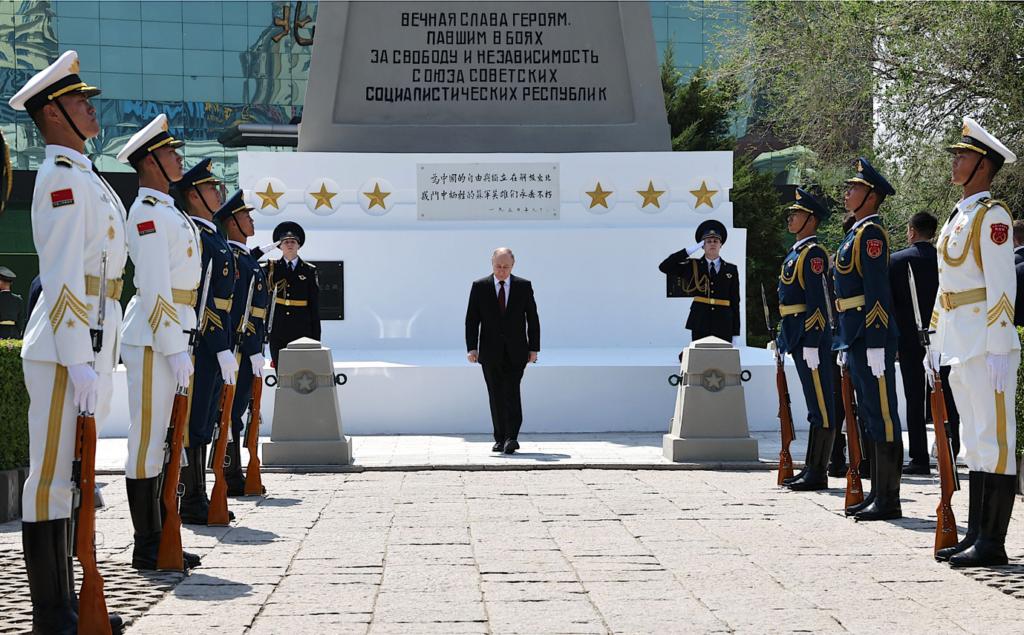
Another area where Putin is trying to follow Xi’s example is strategic partnerships. China’s ability to forge close relationships with countries such as Hungary, Pakistan and Singapore has given it a significant advantage in terms of global influence. Putin, on the other hand, has often relied on more coercive means to achieve his goals, alienating potential partners and undermining Russia’s credibility on the world stage.
Ultimately, Putin’s quest to emulate Xi’s stature faces significant obstacles. Russia’s economy and military might pale in comparison to China’s, limiting Putin’s ability to project power, and while Xi presides over a rapidly rising superpower, Putin commands a faltering, sanctions-battered regime. The Russian leader may find that the path to Xi-like dominance is far steeper than he had hoped.
One thing is certain, however: the world will be watching in nervous anticipation as these two leaders continue to shape the global landscape in their own particular ways.

